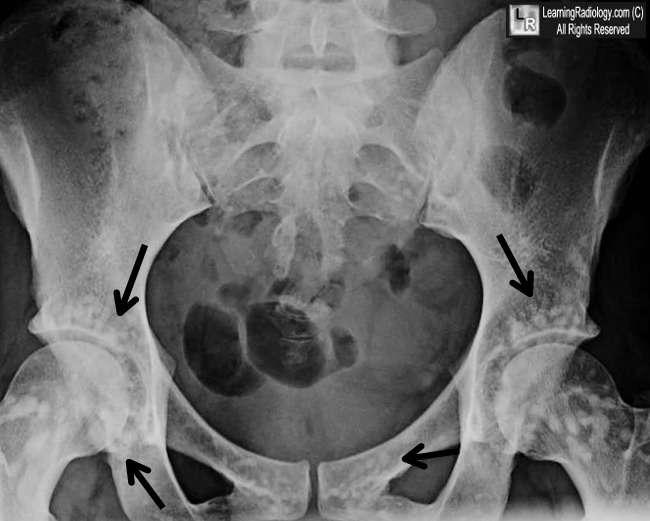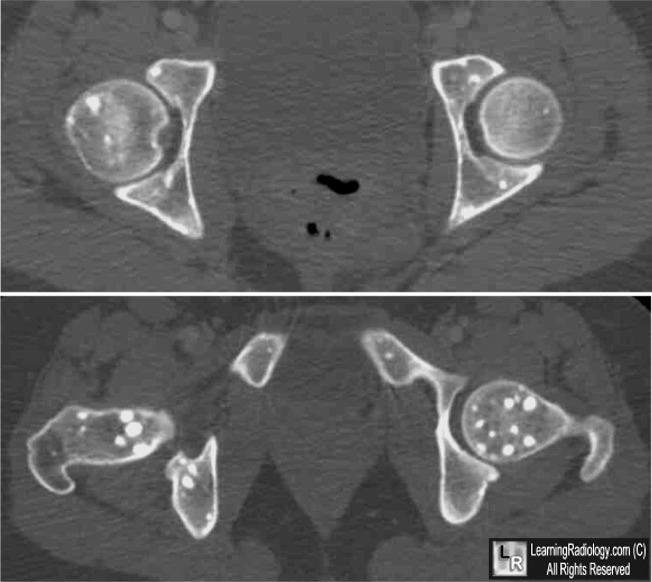http://www.learningradiology.com/archives2010/COW%20415-Osteopoikilosis/osteopoikcorrect.htm
|
Osteopoikilosis
«Spotted Bone Disease»
|
|
General Considerations
Clinical Findings
Imaging Findings
Differential Diagnosis
Treatment
Complications
|
|||
|
Osteopoikilosis. Black arrows point to numerous sclerotic bone islands surrounding the hip joints in a pattern characteristic of ostepoikilosis. CT images of the same patient show the well-circumscribed lesions in the femurs and pelvis.
For these same photos without the arrows, click here and here For more information, click on the link if you see this icon |
|||
|
Osteopoikilosis: A Case Report. Khot R, Sikarwar JS, Gupta RP, Sharma GL. Ind J Radiol Imag 2005 15:4:453-454
|

